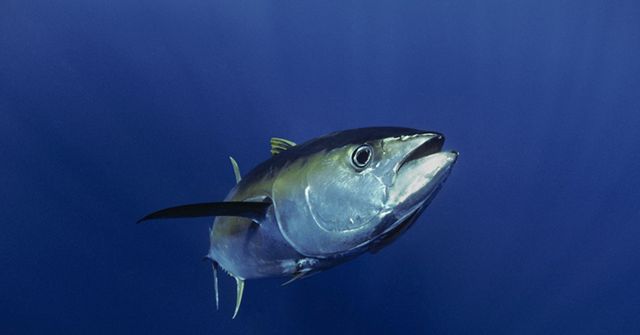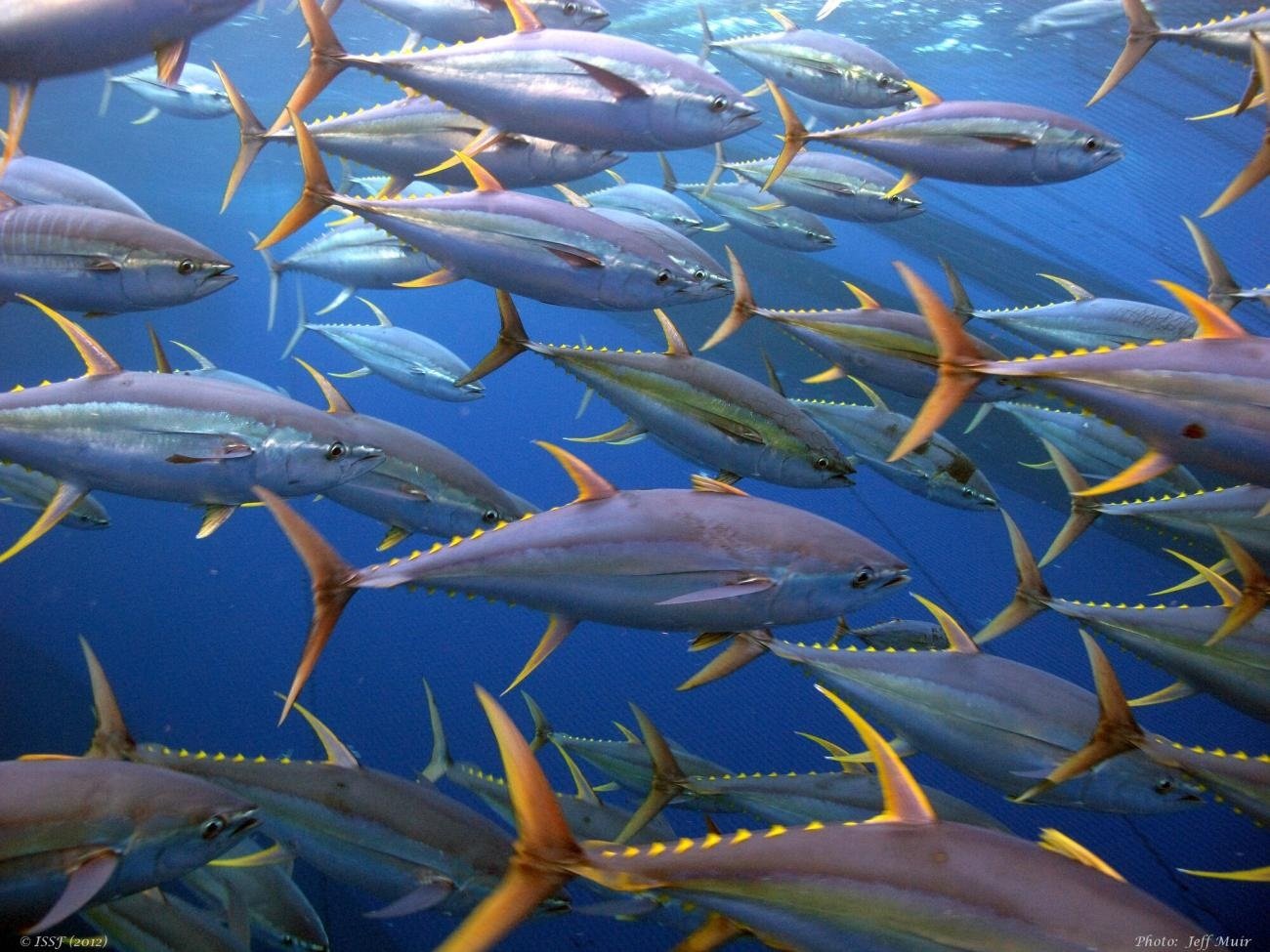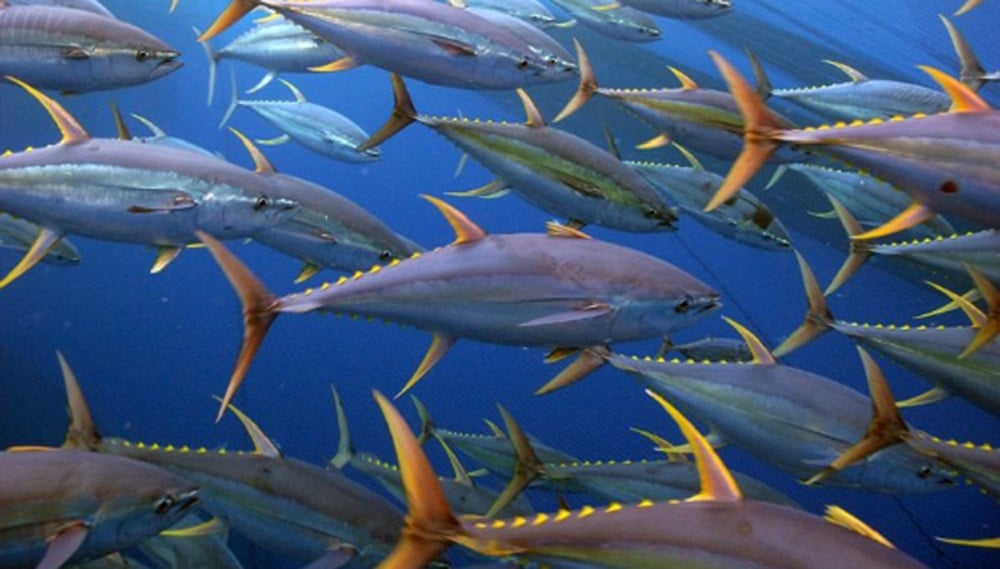A new study shows that Kiribati’s Phoenix Islands Protected Area, which banned all fishing, has not had a significant impact on the skipjack and bigeye tuna populations
A new study published in Frontiers in Marine Science has found that Kiribati’s Phoenix Islands Protected Area (PIPA), which banned all fishing in 2015, has not had a significant impact on the skipjack and bigeye tuna populations. The study, conducted by the foremost experts in Pacific tuna, is the first quantitative assessment of a no-take marine protected area (MPA) on tropical tuna and has implications for many of the world’s largest MPAs.
The authors used stock assessment and fishing data to compare to a biological model of tuna and found that the PIPA did not meaningfully increase tuna abundance. As is the case with many MPAs, closing some areas of the ocean just leads to other areas getting fished more intensively.
“Tropical tunas such as skipjack and bigeye tuna have a wide distribution in tropical and subtropical waters of the Pacific and are capable of spawning anywhere where the water temperature is greater than about 25 degrees-C,” lead author John Hampton said. “Their larvae drift in the surface water currents and as they grow, they are able to move widely through the region. So, closing off one part of the area tends not to offer much if any protection to species like this.”
The researchers also used their model to estimate the impact of closing one-third of the Western Pacific Ocean to fishing. They found similarly poor results.
The Phoenix Islands Protected Area (PIPA)
The Phoenix Islands Protected Area (PIPA) was established in 2006 and became a UNESCO World Heritage Site in 2010 but did not become fully closed to fishing until 2015. The former president of Kiribati, Anote Tong, was widely accused of “misleading the world about the true status of the Phoenix Islands marine reserve” and eventually caved to political pressure and outlawed fishing in 2015, creating the largest MPA in the world. Tong’s apprehension to disallow fishing was well reasoned, with 30 to 50 percent of Kiribati’s revenue coming from fishing, with a significant portion coming from fishing permits in PIPA.
Conservation International (where Tong sat on the board) raised money for Kiribati, but it seems the financial losses have been too much – in late 2021, Kiribati announced it would potentially reopen PIPA to tuna fishing. Hampton et al. 2023 is part of the effort to understand the impact of reopening PIPA.
Skipjack (Katsuwonus pelamis) and bigeye tuna (Thunnus obesus) in the Pacific – representing 40 percent of tuna consumed worldwide – were caught throughout the PIPA before it was enacted. On average, 22,000 metric tons (MT) of skipjack (maximum 112,000 MT) and 1,900 MT of bigeye (maximum 5,300 MT) were caught each year in PIPA, fish that ended up being caught elsewhere after 2015.
What did Hampton et al. 2023 do?
The authors of Hampton et al. 2023 are a veritable Who’s Who of the Pacific tuna research community. Several of the researchers work for the Pacific Community (SPC), an intergovernmental organization of 27 Pacific countries and territories tasked with managing collective resources. They are responsible for performing stock assessments on each Pacific tuna species – no other organisation has a better grasp of the state of Pacific tuna than they do. Authors also include a member of Kiribati’s Ministry of Fisheries and Marine Resources Development.
Their approach to modeling tuna is much different than Medoff et al. 2022, a recent paper that claimed a different large MPA in the Pacific benefited tuna (an explainer on it is coming soon).
In order to investigate the conservation efficacy of MPAs for tropical tuna, four aspects of a model framework must be present:
*Biological characteristics, including movement of the species, need to be represented
*The spatial scope of the model needs to cover the geographical range of the stock and fisheries that impact them
*The spatial resolution needs to be suitable to represent the MPA in relation to the above conditions.
*The model should be fitted to real data that can realistically characterize both fisheries and environmental impact on tuna populations.
In Hampton et al. 2023, the authors compare real stock assessment and fishing data to the best available biological model of tuna in the Pacific, called SEAPODYM (Spatial Ecosystem And Population DYnamics Model). The authors ran the model on a 21-year period of data from 1998 to 2019, including the historical fisheries both with and without the MPA in place. They then compared the results from those two simulations to estimate how much protection regional stocks receive from the MPA.
Results
The authors ran the model in two different ways. First, to see how effective the PIPA was at increasing tuna populations, and second, to see how even larger hypothetical MPAs in the Pacific would affect tuna.
They found that the PIPA MPA did not meaningfully contribute to tuna abundance. They estimate a 0 percent increase in skipjack tuna abundance and a 0.3 percent increase in bigeye tuna abundance thanks to the closure. The area inside the protected area and just outside the protected area show a moderate increase in tuna abundance, but the overall population was not improved, confirming a long-known flaw of MPAs – they simply move fishing pressure elsewhere.
“What we tend to see when areas like the PIPA are closed is that the vessels that would have fished there simply move their activities to adjacent areas, which again limits their conservation effectiveness, at least for tuna,” Hampton remarked.
The authors then split the Western Pacific Ocean into thirds and modeled what closing each third of the ocean would do for tuna abundance. They found very little benefit for skipjack tuna, with closures in two of the three areas detrimental to skipjack biomass thanks to displaced fishing effort moving to more sensitive areas. Bigeye tuna show some population benefits to hypothetical 33 percent closures, increasing 4.8 to 12 percent, depending on the area. Still, these are small increases in abundance relative to the amount of ocean closed to fishing.
Figure from hampton et al. 2023 shows the Western Pacific ocean. The western and central Pacific Ocean showing the Exclusive Economic Zones of coastal States (light blue), PIPA (yellow), and the western (R33W), central (R33C) and eastern (R33E) zones of the western and central Pacific Ocean (WCPO, delineated by the thick black line) evaluated as hypothetical large oceanic Marine Protected Areas. Figure from Hampton et al. 2023.
The western and central Pacific Ocean showing the Exclusive Economic Zones of coastal States (light blue), PIPA (yellow), and the western (R33W), central (R33C) and eastern (R33E) zones of the western and central Pacific Ocean (WCPO, delineated by the thick black line) evaluated as hypothetical large oceanic Marine Protected Areas. Figure from Hampton et al. 2023.
What do the results of Hampton et al. 2023 mean for marine conservation?
Hampton et al. 2023 demonstrates one of the classic scientific criticisms of MPAs—they simply move fishing rather than reduce fishing. It is yet another piece of evidence that ocean closures don’t increase fish populations outside of the MPA. This effect is particularly true of tropical tunas who:
*Tend NOT to have spatially defined spawning areas—they spawn widely throughout the tropical Pacific, so it isn’t feasible to design an MPA around protecting spawning areas.
*Are highly mobile. MPAs can only protect what is inside the MPA—fish movement tends to nullify the local protective effects that MPAs might have.
In the case of the PIPA, the Kiribati government is rethinking its protection criteria as they have lost millions of dollars in revenue since designating the MPA. Kiribati has recently moved to reopen the protected area for tuna fishing and the results of Hampton et al. 2023 show that decision will not negatively impact tuna populations.
Small developing nations like Kiribati that depend on fishing for their economies are targeted by Western NGOs to establish publicity-making MPAs. Kiribati and its experience with PIPA could signal trouble ahead for other nations.
This story was written by Max Mossler, originally published at Sustainable Fisheries on 13 February 2023, reposted via PACNEWS.




